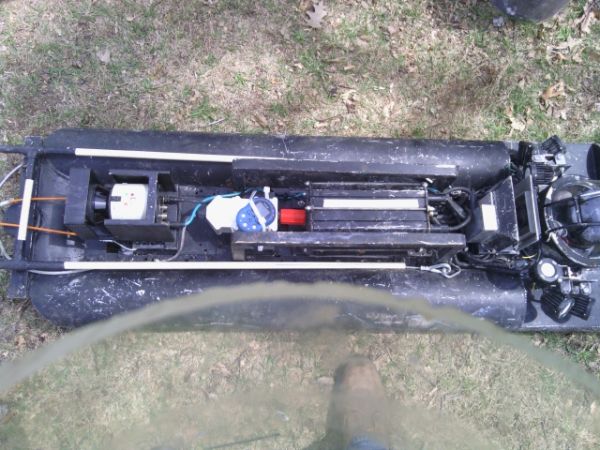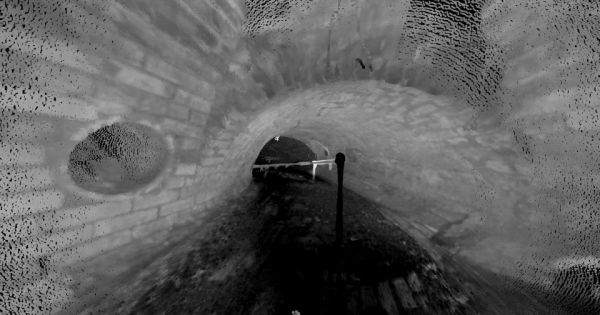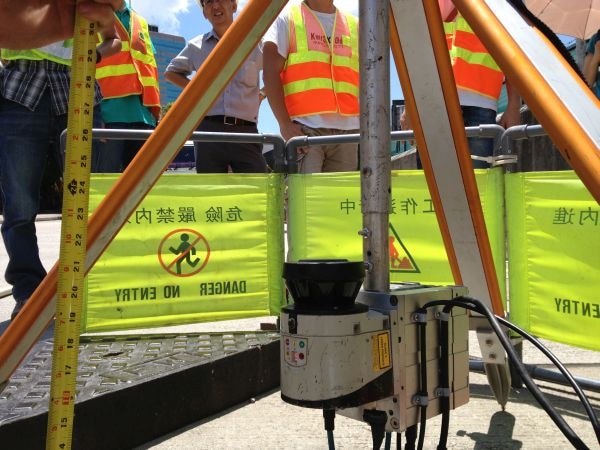Chasing the bad guy through Viennas sewer system in the famous 1949 movie The Third Man may have been a good plot then; todays municipalities face a more subtle threat: the deterioration of aging sewage systems. The Canadian enterprise AquaCoustic Inc. uses SICKs LMS111 outdoor 2D laser scanners to check sewers for damage and to map infrastructures built long before the digital age.
Vancouver-based AquaCoustic Remote Technologies Inc. specializes in assessing underwater structures such as trunk or mainline sewers, hydro dams, reservoirs, ports, and bridge abutments. Their core technologies include robotic deployment of sonar and laser sensors. After experimenting with several other manufacturers, AquaCoustic now uses SICKs LMS111 2D laser scanners to inspect and chart aging sewage systems in Vancouver, all over North America, as well as international cities. In our experience, says founder and President Michael Blackshaw, laser scanners from other manufacturers might have the same IP rating but are just not as rugged as the LMS111. It reliably performs beyond our expectations in this challenging environment.
Rugged housing for harsh conditions

A combination of the LMS111s small form factor, its IP67 rating and its Ethernet interface has made the LMS111 the best choice for pipe inspections, which by nature take place in a very harsh setting. AquaCoustics software engineer Rory Anderson explains: The chemical composition of the sewage in the pipes we must inspect is completely out of our control. Therefore, the rugged housing of the LMS111 and its resistance to environmental influences are key factors in this particular application.

The lasers are used for two tasks: Detecting damage in the sewage system and creating 3D blueprints of the infrastructure for future reference. Two SICK LMS111 2D laser scanners placed at the bow and stern of our inspection robot allow us to both estimate the position and attitude of our robot with respect to the pipe, and then to measure the interior diameter and the size of any anomalies in the pipe wall. The laser scanners are mounted so that the lasers scanning planes are parallel and perpendicular to the bore of the pipe, explains Rory Anderson. The laser is a time-of-flight (ToF) type system that uses direct time-of-flight to determine range.

Underground position determination and production of graphical representations
The LMS111 are employed to determine the location of the robot with respect to its surroundings and then to establish the condition of the pipe wall via compiling a 3D point cloud. To achieve this, the collected laser profiles must be related location and position and be corrected and appropriately interpolated. The resultant 3D point cloud is then analyzed for anomalies and turned into diagrams and other plots requested by the customer. Important pieces of information to be gleaned are ovaling and internal diameter. Ovaling speaks to the long-term suitability of the pipe for operational use and is difficult to estimate visually.

The information provided by SICKs LMS111 is beneficial to AquaCoustics customers - municipalities and industry - in several ways: First, they can determine pipe condition precisely, allowing them to confidently prioritize sewer rehabilitation efforts as well as verify the effectiveness of previous restoration efforts. Second, they are provided with high quality 3D digital areas requiring immediate repair. Third, the method is more cost efficient than by-pass pumping an area in need of checking. And fourth, it avoids the risk of injury to human operators in hazardous conditions.
Sustainability in water and sewage management
Paying attention to the sewage system is also environmentally friendly. Sustainability is writ large in Vancouver, says Mr. Blackshaw. Letting our buried infrastructure go to waste is simply not an option. Yet even without sustainability as an explicit goal, cities around the world struggle with the maintenance of their aging sewage systems. If Vancouvers sewage system was built decades before digital blueprinting, Viennas dates back to 1739. Today, the city employs a full-time staff of 500 to maintain the citys sewage system. Tokyo, Beijing, and Hong Kong also direct concentrated efforts toward their sewage systems.

In short, sustainability has become more than a catchword in the area of water and sewage management; it has become a wise investment in the future if an explosion of costs is to be avoided. As the example of AquaCoustic Inc. demonstrates, sewage systems may prove a huge field of application for SICKs laser technology as municipalities around the world try to catch up not just with crime above, but also with the grime below ground.
- Product information: LMS111 outdoor 2D laser scanners
- Product portfolio: 2D laser scanners
- Customer information: AquaCoustic Remote Technologies Inc.

